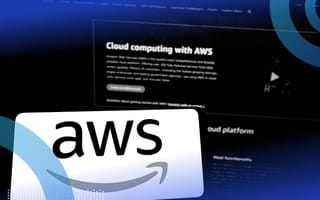The serverless computing model is becoming increasingly popular among developers and product owners due to its scalability and cost-efficiency. According to a report by Global Market Insights, the serverless computing market reached $9 billion in 2022 and is expected to grow at a 25 percent CAGR between 2023 and 2032.
As professional AWS consultants, my colleagues and I at Itransition consider Amazon Web Services a platform of choice for businesses wanting to go serverless. In this article, I’ll cover the concept of serverless computing and highlight how AWS can help accomplish it.
What Is Serverless Computing?
Serverless computing is a cloud service model that allows companies to access required computing resources in the cloud without having to manage servers, which are instead administered by a cloud provider. The provider ensures workload availability and handles all administrative tasks, including configuration management and monitoring of free space on hard drives.
Generally, the offerings of serverless computing providers include database, storage, and FaaS (Function-as-a-Service) services. FaaS platforms play a key role in serverless computing, as they enable the use of such deployment units as functions – small fragments of code executed in response to a certain application event.
Imagine a company that owns a web-based document-sharing solution. In this case, it can deploy a function that automatically starts each time a user downloads a document and turns it off after that. This limited function lifecycle allows a company to consume only as much of the cloud provider's resources as needed.
Benefits of Serverless Computing
By implementing serverless computing, a company can get the following business advantages.
3 Advantages of Serverless Computing
- Lower cloud costs.
- Improved scalability and flexibility.
- Faster time-to-market.
Lower Cloud Costs
Serverless is a pay-as-you-go model, so a company pays only for the computing resources it uses during function performance, which can significantly decrease unnecessary cloud spending.
Improved Scalability and Flexibility
Many companies experience peak traffic periods at certain times (for example, e-commerce stores during Black Friday or Christmas sales) and need to have enough servers to handle the load. Serverless computing adoption resolves these complications, as a FaaS platform can provide required resources and scale functions automatically at a company's demand.
Faster Time-to-Market
Given that the solution is developed as a combination of multiple code pieces, each of which can be deployed very rapidly, software engineers can release a working product version rather quickly. Such modular architecture also streamlines upgrading, as developers can smoothly modify or add functions one by one without changing the entire solution.
Despite all these benefits, serverless computing has some drawbacks and limitations, so you can’t consider it a one-size-fits-all solution. One of the drawbacks is a cold start — a slight delay that occurs if a function hasn’t been executed for a long time, which can negatively affect the end user’s experience. Additionally, functions can be challenging to migrate as the specifics of serverless frameworks can vary from provider to provider.
How Can AWS Help a Company Go Serverless?
AWS is one of the pioneers of serverless computing. In fact, the release of AWS Lambda in 2014 is often considered the starting point in the history of serverless. Over the years, AWS has developed its ecosystem of tools that allow companies to deploy code, integrate software, and perform other IT tasks without managing servers.
The aforementioned AWS Lambda is a core service in the AWS serverless offerings. Developers can upload their code into AWS Lambda to later run in response to events occurring across various AWS resources. By the end of the AWS Lambda function’s lifecycle, a company receives a bill calculated based on the code's execution time, function size, and performance.
One of the main advantages of AWS Lambda is the ability to change the amount of allocated memory to improve and optimize function performance. In addition, developers can use the tool to configure provisioned concurrency (meaning the number of execution environments) so that functions can work quickly, even during peak loads.
Other tools provided by AWS for serverless software development are frameworks – AWS Serverless Application Model and AWS Cloud Development Kit. The former helps teams deploy serverless architectures, while the latter enables deploying app infrastructure as code. Alternatively, developers can use one of the third-party frameworks, such as Chalice or Serverless Framework.
Also, AWS offers tooling and infrastructure resources for continuous integration and delivery (CI/CD). For example, services such as AWS CodePipeline and AWS CodeBuild allow engineers to manage CI/CD pipelines and transform source code into ready-made software packages, respectively.
Also, the AWS platform offers various services for monitoring and continuously optimizing serverless software performance. For instance, developers can use Amazon CloudWatch, a tool that provides log data nearly in real time, to monitor the health of cloud-based software. Additionally, IT specialists can use third-party tools, such as Dashbird and DataDog that help identify and solve performance issues in AWS Lambda solutions.
Consider AWS for Your Serverless Needs
The serverless computing model is becoming increasingly popular with both developers and companies because it allows them not to manage servers and virtual machines. Amazon Web Services is one of the key platforms in the serverless computing market, providing workloads based on a pay-as-you-go pricing model.
Despite the advantages of AWS serverless, operating within this model is fraught with multiple challenges that companies can avoid by approaching the adoption correctly. Companies can also consult third-party AWS experts to discover serverless computing best practices more relevant to their case.





